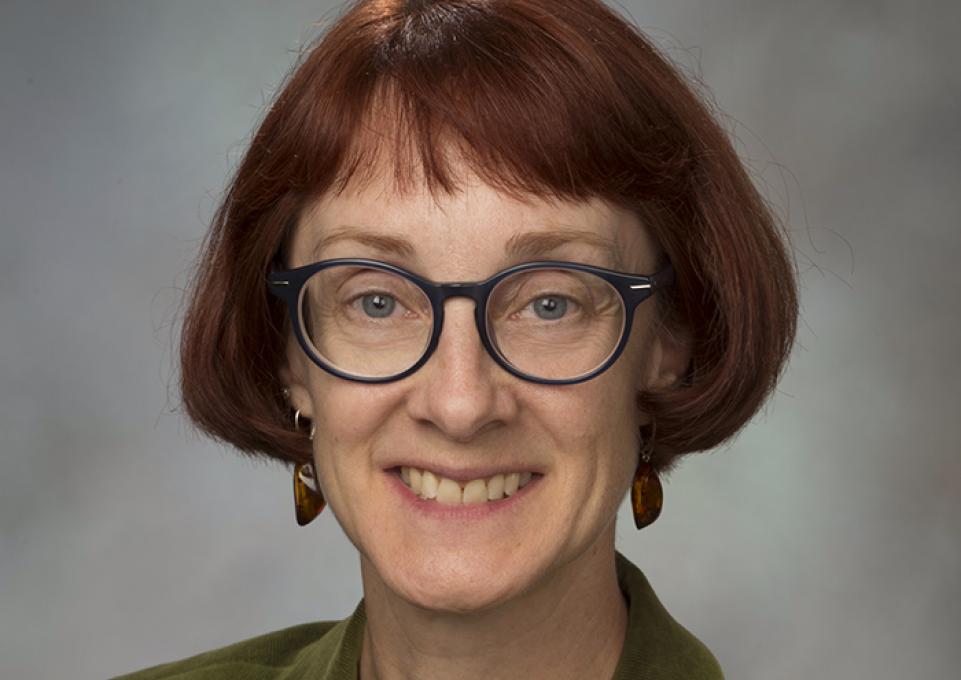
As a young girl, Stephani Foraker, a cognitive psychologist and Buffalo State associate professor of psychology soloed as an apprentice to the Alberta (Canada) Ballet. She then danced professionally for 10 years with the Ohio Ballet.
The two disciplines surprisingly intersected for her. Foraker, who specializes in memory and the role of gesture in memory and communication, first discovered those subjects on the dance floor.
“As a dancer, I developed spatial awareness and noticed patterns through body movement,” she said. “I spent a lot of time on repetitive movements while learning a choreographer’s steps. You have to learn to trust the process and dive into the material without analyzing.”
When she began to study psychology as an undergraduate—a degree she pursued at the end of her dancing career—she was intrigued by how the body and the mind work together to communicate.
“The body and mind are two sides of the same coin,” said Foraker, who joined the Buffalo State faculty in 2008 and teaches such courses as Psycholinguistics and The Psychological Power of Language.
“You use your body to recover knowledge. Say you walk into a room and forget what you wanted. Often, once you walk back in, you’ll remember what you needed.”
In her post-doctoral study at the University of Chicago, Foraker focused on gestures, and how humans use their bodies to complement language. One of the biggest things she discovered was how hand gestures work as part of co-reference. They help clarify who or what we are talking about, such as which person in a story dropped his coffee.
She has studied how different settings affect their use. For instance, in a formal business situation, we might use our hands less than in an informal one with friends. While the use of gestures is very individualized and some people rely on them more frequently than others, gestures serve a crucial role in being understood.
“We can be unclear in our speech and make up for it with the pictures we draw with our hands,” she said. “Our hands help us craft a better message.”
Closely studying body languages also can reveal what lies underneath a speaker’s words.
“Someone can say one thing while their body language belies what they are saying. They may be lying, or they may have discomfort for some reason,” she said. “If you know the signs, it becomes easier to spot a liar. Unless it’s a pathological liar and then such detection is almost impossible because they’ve created a narrative that is real to them.”
She said law enforcement officials or border guards may first ask people easy questions they know the answer to, such as “Where do you live?” Then they have a baseline of that person’s truth-telling. They can use that baseline to discover if someone is trying to hide something in subsequent questions.
While Foraker said she probably isn’t better than anyone else at ferreting out liars, she said she does listen to her gut more than she used to.
“If something doesn’t feel right, your unconscious is picking up information that is valuable,” she said. “Listen to it.”
Even with her busy teaching schedule, Foraker continues to dance, primarily contemporary style with Anne Burnidge Dance.
“I’ve had to learn how to turn off the analytical part of my brain and just be in the moment,” she said.
It may seem an unusual career trajectory—from ballet dancer to psychology professor—but Foraker said there are several psychologists and neuroscientists who are former dancers.
“Both short-term and long-term memory must be used to perform, not unlike teaching and research,” she said. “You are constantly putting the past and the future together.”
About Stephani Foraker
Foraker received a bachelor’s degree in psychology from the University of Akron and her master’s and doctorate in experimental psychology from New York University. Prior to joining Buffalo State, she was a post-doctoral researcher at the University of Chicago. She received the President’s Award for Excellence as an Undergraduate Research Mentor in 2016.
